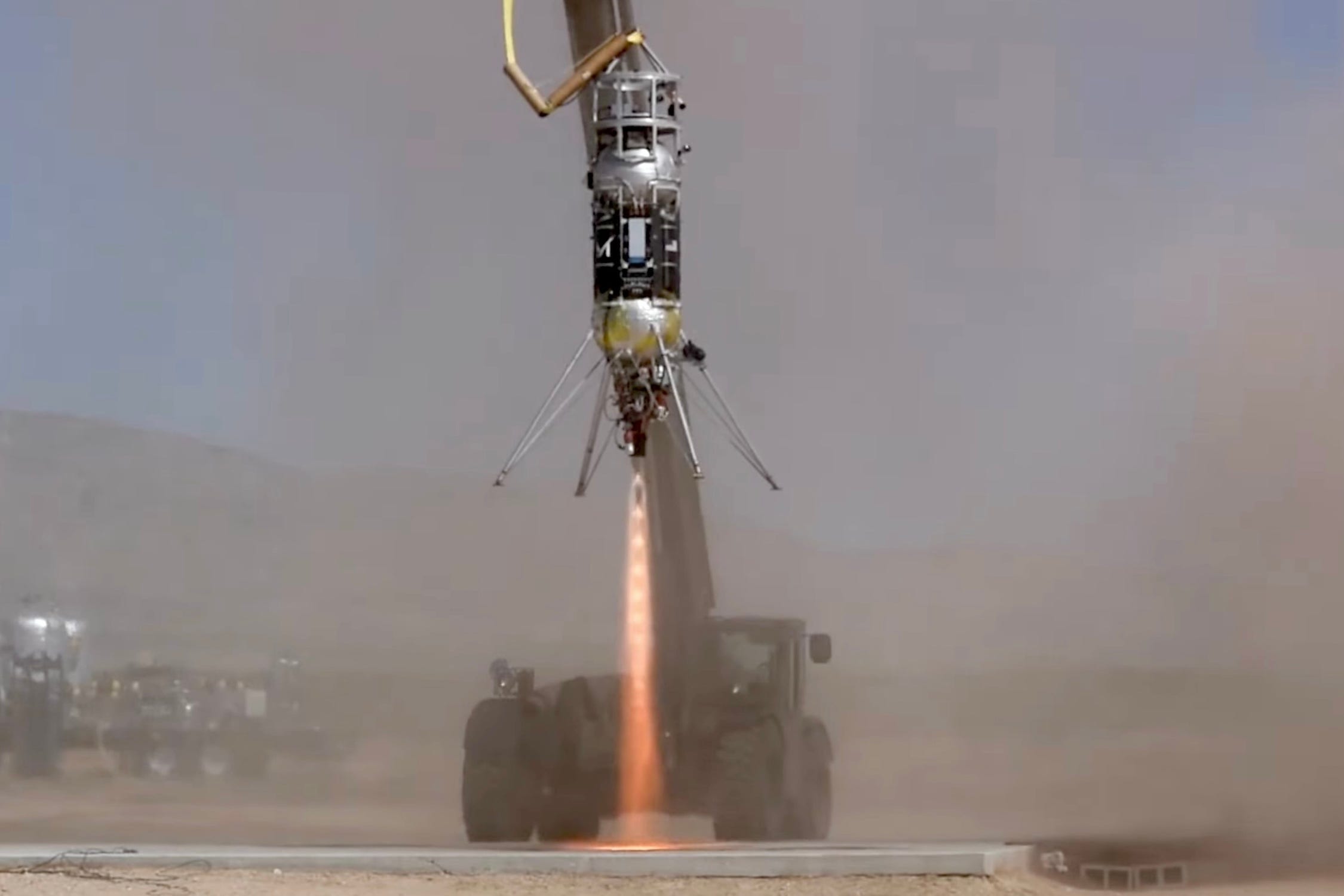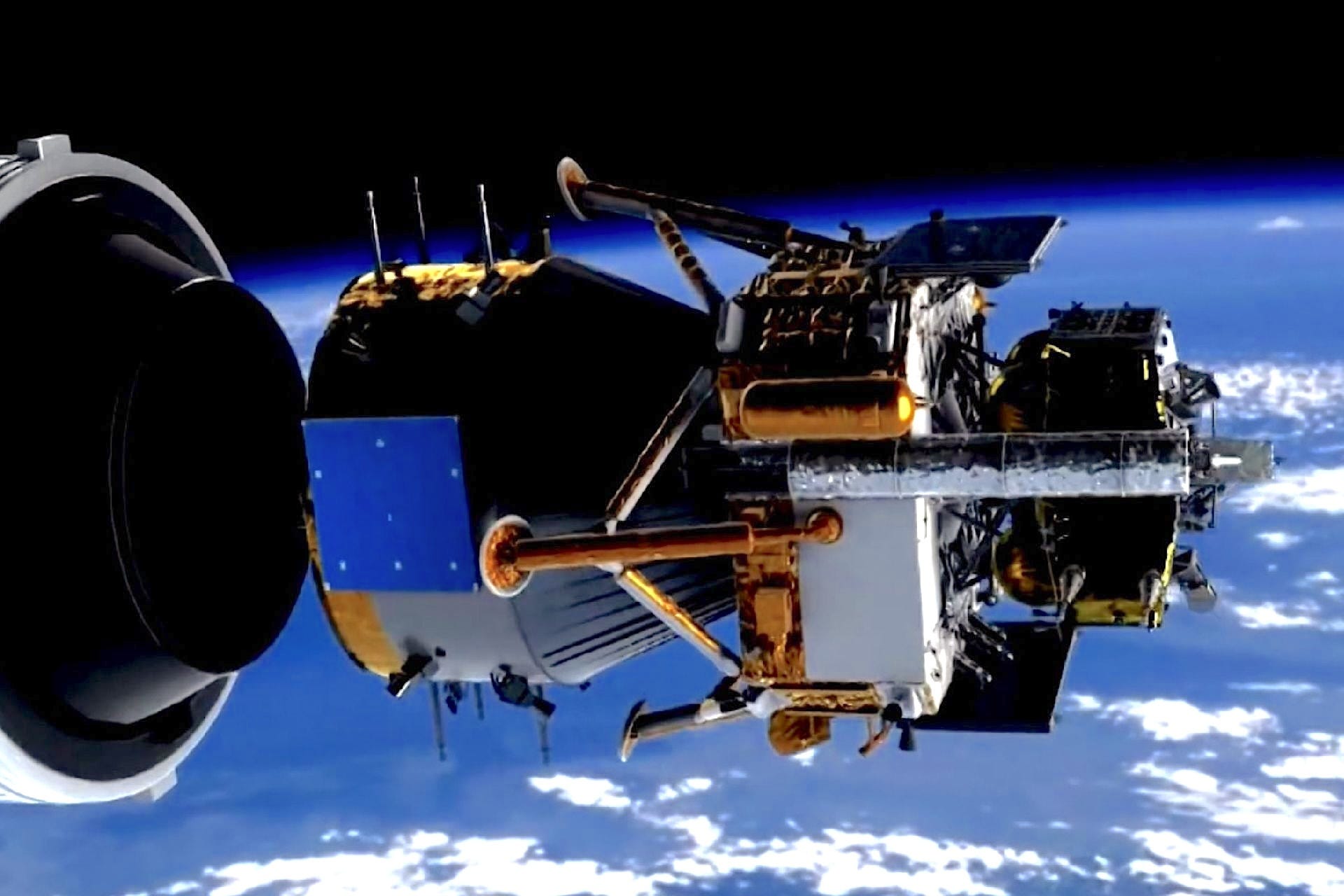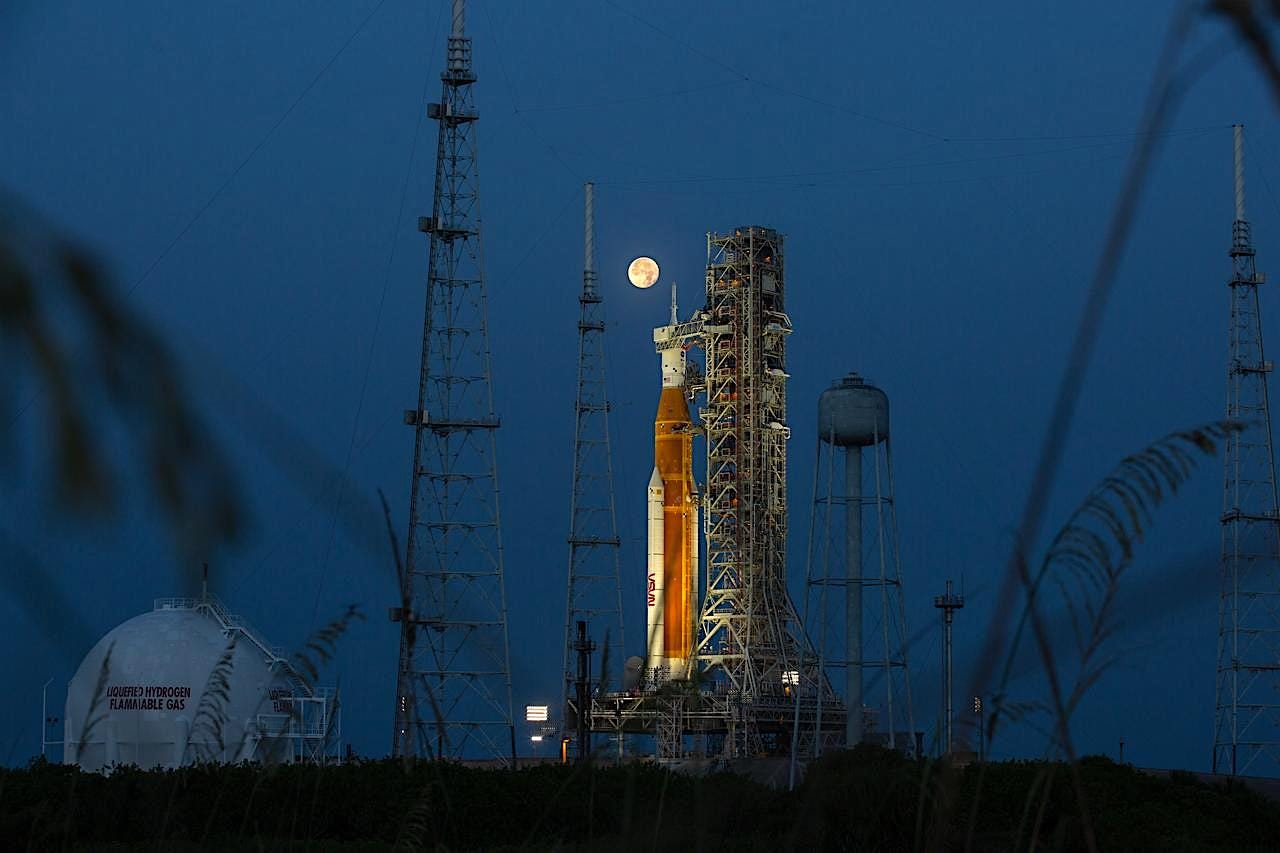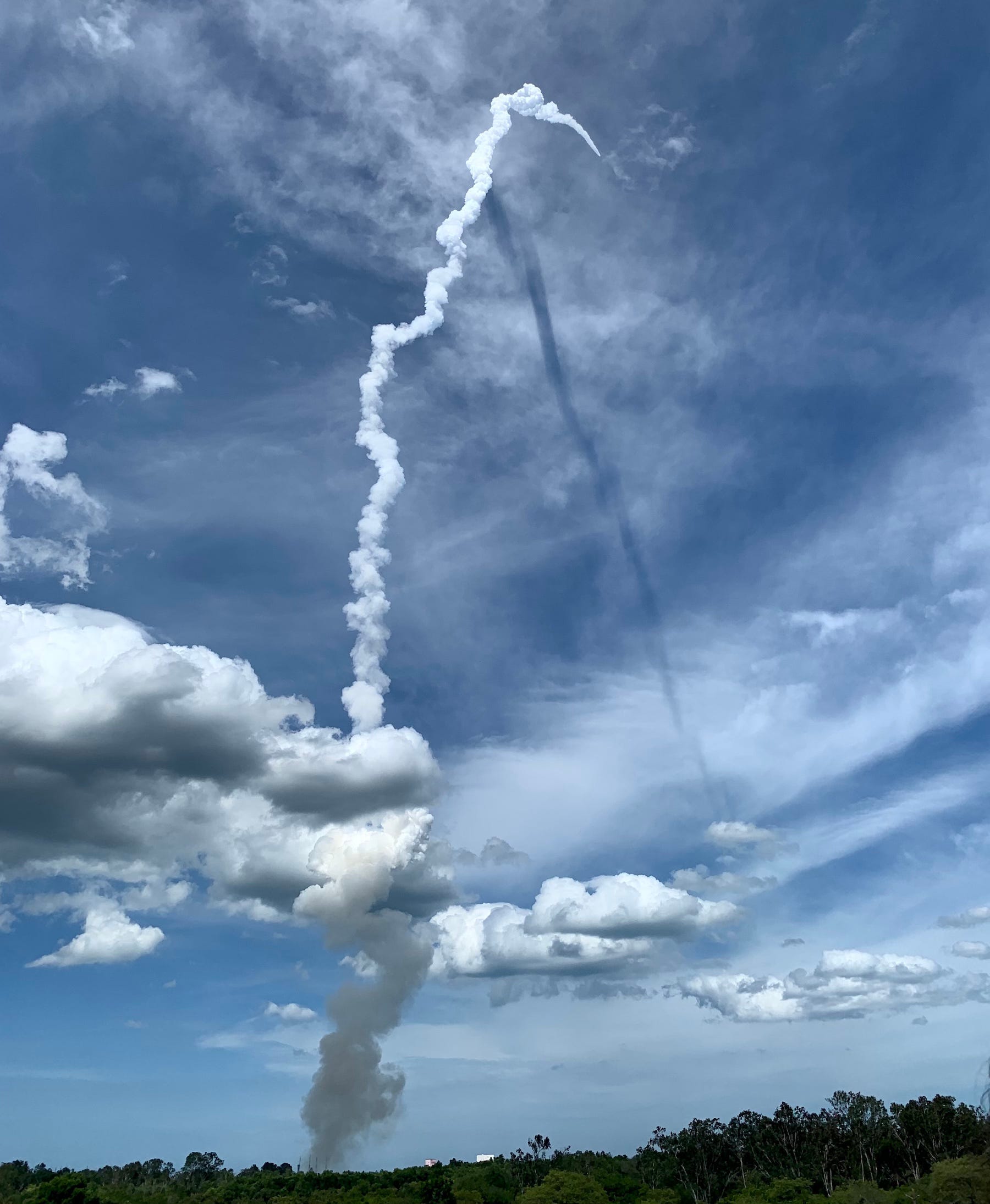Moon Monday #149: The latest updates on lunarbound hardware and missions
Two clarifications from Moon Monday #148: Most of the enhanced mobility I referred to provided by Axiom’s upcoming AxEMU spacesuits for crewed Artemis astronauts isn’t in contrast to NASA’s xEMU units but rather the current EMU suits in operation at the International Space Station. In fact, being based on xEMU, AxEMU inherits most of its enhanced mobility. Second, NASA hasn’t “shelved” the xEMU suits; the agency actively uses them for training and development, wherein they better represent the upcoming suits as compared to EMUs. NASA’s Technical Reports Server has more development updates on the matter. I apologize for any confusion caused in the above.
Prepping for long-term activity at our Moon

- Earlier this month, Astrobotic completed a test campaign of Masten-Space-inherited Xodiac rocket ‘tethered liftoff and landing’ flights for the NASA-funded prototype laser sensor called Ejecta STORM. Combined with previous such high fidelity tests—short of a Moon mission—Ejecta STORM is helping scientists better understand how lunar lander rocket plumes affect lunar soil, and thus help quantify and characterize risks posed by lander plumes to various kinds of nearby lunar hardware and future habitats. A White Paper submitted to the 2023-2032 US Decadal Survey strongly recommended future NASA Moon missions to carry instruments for specific plume effect measurements, and that such data be public. Ejecta STORM hopes to aboard one such mission.
- SpaceX is testing the extended fairing made for its Falcon Heavy rocket to accommodate more/larger payloads, Stephen Clark reports. This fairing design will house the two pre-docked propulsion and habitat modules of the NASA-led crewed international Gateway lunar orbital station for their Falcon Heavy launch to Earth orbit in late 2025. With a combined mass of about 18,000 kilograms, it will be SpaceX’s heaviest spacebound payload haul yet. NASA’s $331.8 million contract for this launch includes some of the development cost for said extended fairing. Relatedly, Jeff Foust reported in July that NASA’s decision to pre-mate the said two Gateway modules one led to some mass constraints, which combined with evolving Gateway requirements from the agency, resulted in contractor Northrop Grumman taking a $36 million hit in building the habitable module.
- China’s Chang’e 7 orbiter—targeting a 2026 launch alongside the namesake lander—will carry a 3-kilogram instrument duo from the National Astronomical Research Institute of Thailand (NARIT) to study solar storms and cosmic rays respectively, Ling Xin reports. Thailand, with involvement from a NARIT delegation, joined the upcoming China-led long-term scientific Moonbase on the lunar south pole called the International Lunar Research Station (ILRS) on September 25. NARIT is Thailand’s largest space research organization, and operates the Thai National Radio Telescope. The latter could be used to monitor spacecraft trajectories of ILRS missions. Relatedly, there are (as yet unspecified) six more international payloads on the Chang’e 7 mission, including a detector for lunar dust and electric fields as well as a telescope on the lander.

Many thanks to Epsilon3 for sponsoring this week’s Moon Monday.
NASA concurs concern for the SLS rocket’s sustained existence
The SLS rocket just cannot catch a break. In yet another scathing analysis, following the September 7 report by NASA’s Government Accountability Office (GAO), the agency’s Office of Inspector General (OIG) has concluded that NASA will likely fail to achieve the aspirational 50% cost reduction in building SLS by end of decade. This is in reference to NASA preparing to award a single launch service contract for future SLS launches to Deep Space Transport LLC, a joint venture between two major SLS contractors Boeing and Northrop Grumman. Eric Berger notes how under the contract terms Deep Space Transport has no incentive to lower prices.
The GAO’s September 7 report criticized the agency for continuing to be not transparent enough about the true cost of SLS, something central to the nearly $100 billion Artemis Moon program. The OIG estimated in 2021 that, separately from development costs, the first three SLS flights will cost $2.2 billion per launch. The OIG now says the flights following those will cost $2.5 billion per launch. This assessment is in line with the GAO noting growing costs despite the SLS moving into production.
Notably, not only had NASA officials acknowledged to the GAO that the SLS is “unsustainable” at its current level but the agency concurred with the OIG’s confrontation as well, clarifying that the 50% cost reduction goal was “aspirational and not based on actual analysis.” The OIG has recommended that NASA look into using upcoming commercial heavy-lift vehicles instead of SLS to sustain the Artemis program and its ambitions:
In our judgment, the Agency should continue to monitor the commercial development of heavy-lift space flight systems and begin discussions of whether it makes financial and strategic sense to consider these options as part of the Agency’s longer-term plans to support its ambitious space exploration goals.

More Moon
- Chandrayaan 3 Project Director P. Veeramuthuvel confirmed in a recent talk at NIT Tiruchirappalli that ISRO did delay the mission’s launch to cater to the commitment of launching satellites for OneWeb. I had argued in October 2022how ISRO prioritized the two available GSLV Mk III rockets to (opportunistically) commercially launch OneWeb satellites instead of Chandrayaan 3. Veeramuthuvel said Chandrayaan 3 was ready to fly in January 2023, which means while the first launched set of 36 OneWeb satellites in October wasn’t a direct snatch the February loft was. Oh, well. I too am excited about India’s growing commercial space capabilities but in my view they need not come at the expense of our space science missions and ambitions, especially when the nation formally prides itself on its purported space science achievements.

- In an interesting development to keep an eye on, DARPA and APL announced the Lunar Operating Guidelines for Infrastructure Consortium, or LOGIC, to hope to bring together varied international stakeholders so as to standardize upcoming lunar infrastructure. This would accelerate hardware development while maintaining interoperability.
- John Hopkins APL is looking for a post-doctoral researcher who, with their expertise in working with lunar remote sensing data, will assist the 12-person Geology Team leading surface science investigations for NASA’s upcoming Artemis III crewed Moon landing mission mid-decade.
- October 21 is International Observe the Moon Night! Other than checking out and sharing NASA’s excellent guide, may I also suggest browsing my humble complementary contribution to the worldwide effort to get people to look up to the Moon? Check out my Moon projects for curious people from all backgrounds to learn more about our cosmic companion’s immense scientific, technological, and exploratory importance. If you like my labor of lunar love, share it with a friend, relative, or colleague you think might benefit from it:
